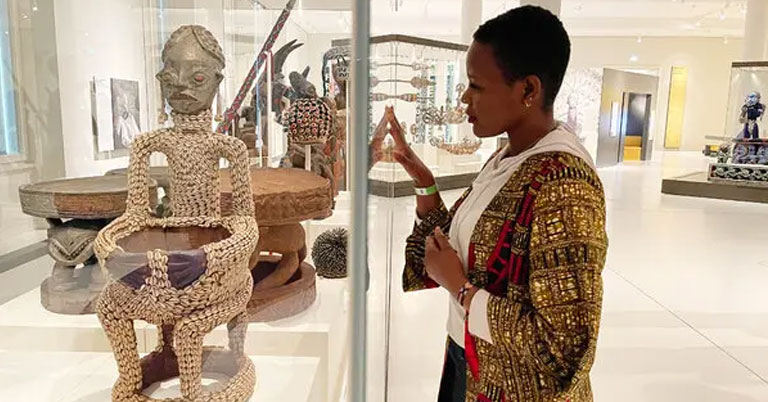In the quiet corridors of countries like Cameroon, Indonesia, and the Democratic Republic of Congo, an extraordinary yet unheralded mission is taking shape. Heritage workers, activists, and government officials are laying down a meticulous framework to reclaim cultural treasures wrongfully seized during colonial rule. While much has been said of Western museums’ efforts in this direction, the true heart of the struggle resides within the very nations from which these artifacts were taken.
The journey towards the restitution of plundered heritage is a labyrinthine one, fraught with challenges. Beyond the primary task of identification and recovery, questions abound regarding ownership, custody, museum upgrades, community engagement, and stirring public interest.
According to Placide Mumbembele Sanger, a professor at the University of Kinshasa and an advisor to Congo’s government, the path to reclaiming cultural heritage is not a short sprint but a marathon. “This is not something we can complete in five years,” he said, underlining the enormity of the undertaking.
The global momentum towards restitution was initially sparked by a 2017 pledge by France’s President Emmanuel Macron. This inspired Germany, the Netherlands, France, and Belgium to set up guidelines to process claims and begin returning artifacts. However, the path has not been without its twists and turns.
Indonesia’s Methodical March
Indonesia’s reclaiming of nearly 500 cultural treasures wrongfully acquired during Dutch rule is illustrative of the complexity and dedication required in this quest. The restitutions, heralded by the Dutch government, may be the beginning of a lengthy process involving tens of thousands of Indonesian objects, primarily housed in the Netherlands.
In synchrony with the Netherlands’ structures, Indonesia has actively prepared for the return of its heritage. Detailed communication, coordination, and the establishment of counterpart panels and formal requests form the backbone of this collaborative endeavor.
The focus, however, is not solely on the physical objects. Hilmar Farid, the director-general of Indonesia’s Ministry of Education and Culture, emphasizes the importance of “knowledge production.” Understanding the narratives and stories linked to each artifact is a priority.
A paradigm shift in the museum approach is also underway. Farid envisions a more inclusive and participatory interaction with heritage, allowing non-traditional museum-goers to connect with the objects and their histories.
Congo’s Reappropriation of Memory
The Democratic Republic of Congo’s quest to reclaim cultural heritage began symbolically with the receipt of an inventory of 84,000 Congolese heritage objects from Belgium. This marked the commencement of what Prime Minister Jean-Michel Sama Lukonde described as a “reappropriation of our national memory.”
What followed was the establishment of a decree to create a system for handling restituted cultural heritage and the engagement of experts across various fields. With Belgium’s legal groundwork for restitutions to Congo, Rwanda, and Burundi, the focus in Congo is on thoroughness over haste, an emphasis endorsed by Mumbembele.
A Global Undertaking
While the spotlight often falls on Western museums and governments, the actual struggle to restore lost heritage is unfolding within the very lands that have borne the loss. In places like Nepal, the focus is on returning statues to the original places of worship. In Indonesia and Congo, it’s about reclaiming national identity and reawakening cultural narratives.
This mission is more than a battle to retrieve objects; it’s an endeavor to reconnect with a history, identity, and spirituality that was wrongfully severed. As the work continues, with potential expansions to other countries like Germany, Britain, Belgium, and France, the global south is demonstrating that the restitution of cultural heritage is not simply about possession, but rather about restoration, understanding, and ultimately, healing.
What began as a pledge by Western leaders has evolved into a profound, grassroots movement led by the countries and people most affected. The task is Herculean, and the timeline is extended, but the commitment to this cause reflects a deep and abiding connection to a heritage that transcends time, borders, and politics. It’s a silent struggle, often overshadowed by larger global narratives, yet it resonates with the very essence of human history and identity.
